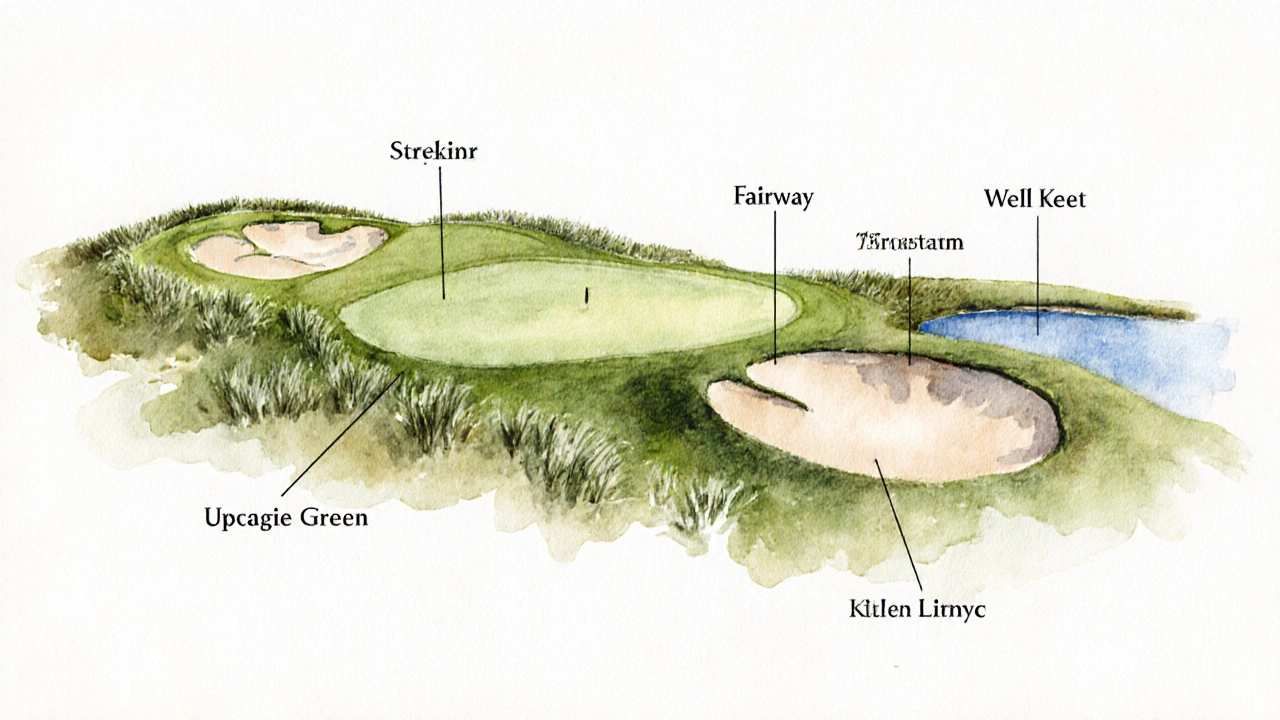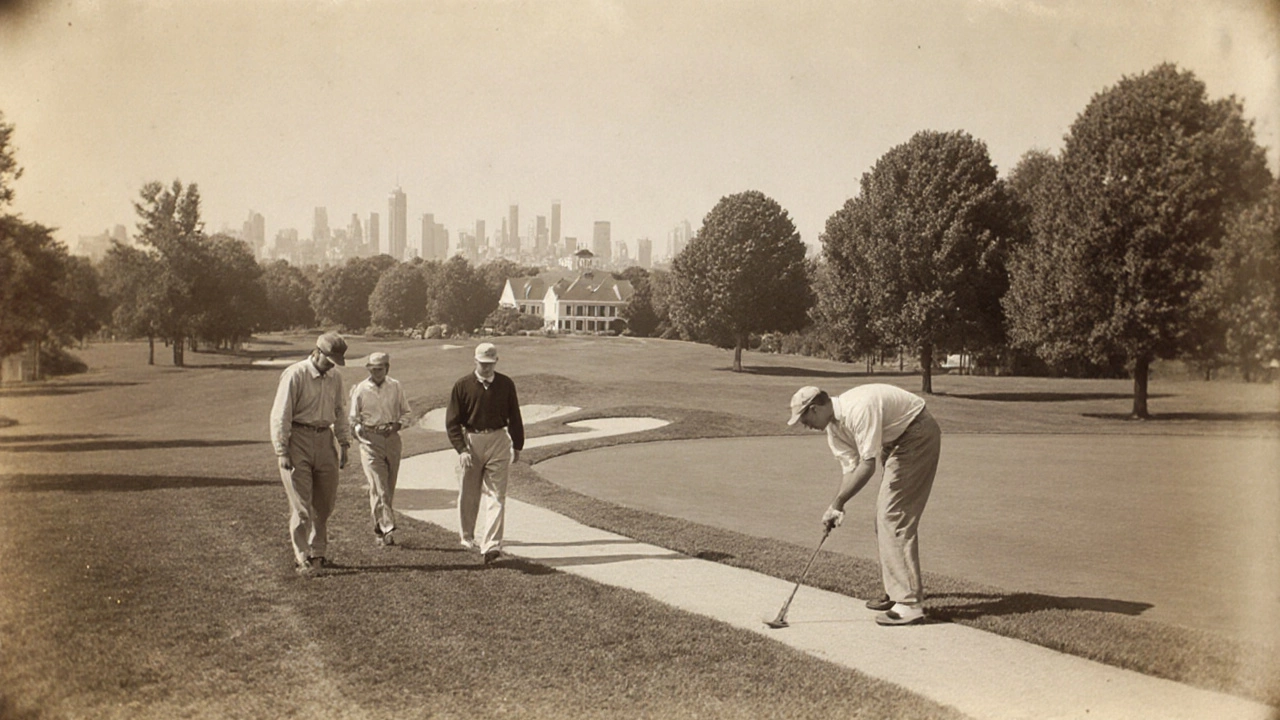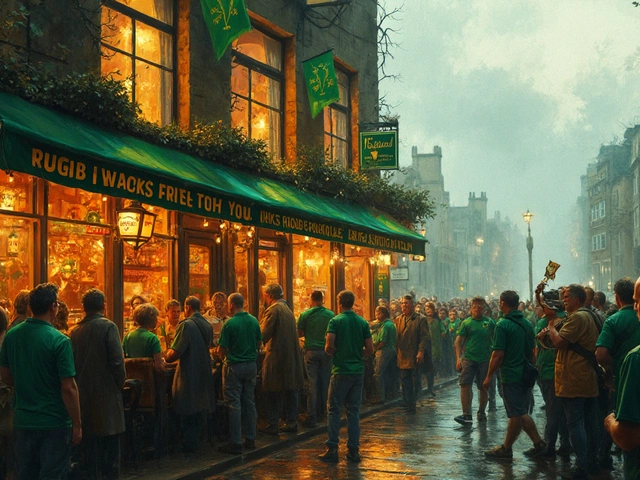Golf Course Difficulty Estimator
Golf Course Difficulty Calculator
Enter the course details to calculate the difficulty rating based on USGA standards.
Difficulty Results
Enter course details to see the difficulty rating
When you hear someone ask, “What is the golf field called?” the short answer is golf course. But the phrase hides a whole world of design, history, and etiquette that most casual players never notice. This guide breaks down exactly what a golf course is, how it’s built, the key parts you’ll see on the fairway, and why the name matters for players of every skill level.
Defining a Golf Course
Golf course is a specially designed area of land where the game of golf is played. It typically consists of a series of holes, each featuring a teeing ground, a fairway, and a putting green, all linked by natural or artificial terrain. The course is regulated by governing bodies such as the USGA and R&A, which set standards for length, difficulty, and safety.
Brief History of the Term
The word “course” comes from the Old French cours, meaning a running or a path. Early Scottish courses were simple stretches of linksland where the ball rolled toward a natural target. As the sport spread, designers began shaping the land into distinct sections-tee boxes, fairways, greens-creating the modern golf course we recognize today.
Core Components of a Golf Course
Every hole is built from a handful of recurring features. Knowing each part helps you read the layout and plan your shot.
- Tee box is the starting point for each hole. It is a flat, often mowed area where players place their ball before the first stroke. Tee boxes are numbered and may have multiple locations to accommodate different skill levels.
- Fairway is the well‑maintained strip of grass that connects the tee box to the green. It offers the best lie for the ball and is usually shorter than the surrounding rough.
- Rough surrounds the fairway with longer grass, making it harder to advance the ball. The rough can be strategic, forcing players to choose safer routes.
- Green is the short, closely mowed area surrounding the hole. It’s where putting occurs, and its surface is designed to allow the ball to roll smoothly.
- Bunker (or sand trap) is a depression filled with sand, placed to challenge approach shots. Getting out of a bunker safely requires a specific swing technique.
- Hazard is a broader term covering water bodies, bunkers, and any other obstacle that penalizes errant shots.
Types of Golf Courses
Not all courses look the same. Geography, climate, and design philosophy produce distinct categories.
| Type | Typical Terrain | Design Focus | Typical Location |
|---|---|---|---|
| Links | Coastal dunes, sandy soil | Natural undulations, wind play | Scotland, Ireland, coastal US |
| Parkland | Tree‑lined fairways, lush grass | Strategic shot placement | Europe, inland US |
| Desert | Arid, scrubby vegetation | Minimal water, rugged aesthetic | Southwest US, Middle East |
| Executive | Shorter holes, mixed par 3/4 | Time‑efficient play | Urban areas, resort resorts |

Design Elements That Influence Difficulty
Course architects use several measurable factors to set a course’s challenge level.
- Par: The number of strokes an expert golfer is expected to need. Typical courses are par 70-72.
- Yardage: Total distance from tee to green across all holes. Longer courses favor players with greater driving distance.
- Slope Rating: A numeric value (55‑155) that indicates how much harder the course plays for a bogey golfer compared to a scratch golfer.
- Course Rating: The expected score for a scratch golfer under normal conditions.
- Ground Conditions: Moisture level, grass type (Bentgrass, Bermuda), and maintenance schedule affect ball roll.
Why the Name Matters: Golf Course vs Golf Field
In everyday conversation, “golf field” is a colloquial way of referring to a golf course, especially in non‑English speaking regions where the direct translation of “course” sounds odd. Officially, only the term “golf course” appears in rulebooks, registration documents, and signage. Using the correct name helps you locate the venue on GPS devices, book tee times, and understand local regulations.
How Courses Are Named
Names often reflect geography, history, or the founding club. Examples include:
- St. Andrews Links - named after the town and its historic links‑style layout.
- Pebble Beach Golf Links - highlighting its coastal setting and iconic cliffs.
- Royal Melbourne Golf Club - indicating royal patronage and club ownership.
Understanding the naming convention can give clues about the course type, difficulty, and even expected weather conditions.

Governing Bodies and Standards
The USGA (United States Golf Association) and the R&A (Royal & Ancient Golf Club of St Andrews) set global standards for course measurement, green speed (Stimpmeter), and safety. They also maintain the official Rules of Golf, which dictate how many obstacles can be placed, how hazards are marked, and what constitutes a proper tee.
Etiquette Tips for First‑Time Players
Stepping onto a new golf course can be intimidating. Follow these simple habits to fit in:
- Replace divots on the fairway and smooth out ball marks on the green.
- Keep your cart on designated paths; many courses prohibit driving on the fairway.
- Speak quietly while others are preparing a shot; the swing is a concentration‑heavy moment.
- Observe local dress codes-collared shirts and appropriate shoes are usually required.
- Know the pace of play guidelines; if you’re holding up a group behind you, let them play through.
Mini‑FAQ
Is a golf field the same as a golf course?
Yes, “golf field” is an informal synonym for a golf course. Official documents and signage use “golf course”.
How many holes does a standard golf course have?
The standard layout is 18 holes, though there are 9‑hole courses and executive courses with fewer holes.
The standard layout is 18 holes, though there are 9‑hole courses and executive courses with fewer holes.
What is the difference between a links and a parkland course?
Links courses are built on coastal dunes with natural undulations and wind exposure. Parkland courses sit inland, feature tree‑lined fairways, and have more manicured terrain.
Do all golf courses have the same number of par‑3, par‑4, and par‑5 holes?
No. While many courses aim for a mix that totals par‑70 to par‑72, the exact distribution varies based on land shape and design philosophy.
Can I play a round of golf on public land without a formal course?
Some municipalities maintain “pitch‑and‑putt” or public courses that are open to anyone for a small fee. However, a true golf course requires a licensed layout that follows the Rules of Golf.
Final Thoughts
Understanding that the “golf field” you’re curious about is technically a golf course opens the door to a richer appreciation of the sport. From the tee box to the green, each element plays a role in strategy, difficulty, and enjoyment. Whether you’re booking a tee time at a coastal links or a downtown executive course, knowing the terminology helps you navigate the layout, respect the etiquette, and improve your game.






